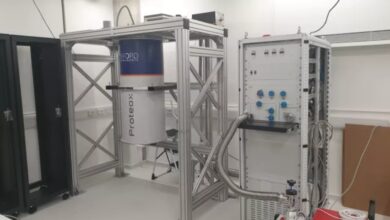James Webb Telescope Unveils “Sleeping Monster” of the Early Universe

Astronomers using the James Webb Space Telescope (JWST) have uncovered an extraordinary discovery: a massive, previously hidden galaxy from the dawn of the universe, now nicknamed the “Sleeping Monster.” This ancient celestial structure, lying dormant and unnoticed for billions of years, offers unprecedented insights into the early stages of cosmic evolution.
A Giant Hidden in Plain Sight
The galaxy, located approximately 13 billion light-years away, is one of the most massive structures ever identified from the early universe. It formed just 700 million years after the Big Bang during a period known as the Cosmic Dawn.
“We were astonished by its size and complexity,” said Dr. Lena Rodriguez, an astrophysicist and lead author of the study. “This galaxy is far larger than we expected to find at such an early stage of the universe’s history. It challenges our understanding of how galaxies form and evolve.”
The JWST’s advanced infrared capabilities were instrumental in detecting the galaxy, which had remained obscured by cosmic dust and its vast distance from Earth. Prior telescopes lacked the sensitivity to peer into this region of space with such clarity.
Unpacking the “Monster”
Dubbed a “sleeping monster” because of its dormant state, the galaxy’s star formation has slowed significantly compared to its early years of rapid growth. Researchers speculate that its early activity may have consumed much of its available gas, leading to a period of relative inactivity.
Analysis of the galaxy’s structure reveals a dense core surrounded by older, redder stars, indicating it matured quickly after its initial formation. The presence of such a mature galaxy at this point in cosmic history defies conventional models of galaxy formation.
Implications for Cosmology
The discovery of this “sleeping monster” raises significant questions about the timeline and mechanisms of galaxy formation in the early universe. Current theories struggle to explain how a galaxy of this size and complexity could have formed so quickly after the Big Bang.
“This finding suggests that the conditions of the early universe may have been more conducive to rapid galaxy formation than previously thought,” explained Dr. Arjun Patel, a co-author of the study. “We may need to revise our models to account for these giant structures.”
The galaxy’s discovery also underscores the critical role of advanced observatories like the JWST in expanding our understanding of the universe. Its ability to penetrate cosmic dust and observe in the infrared spectrum has opened new frontiers in astronomy.
The Road Ahead
Astronomers are eager to study the “sleeping monster” further. Plans are underway to analyze its chemical composition and star formation history in greater detail. Researchers hope to uncover clues about the role of such massive galaxies in shaping the universe’s large-scale structure.
“This is just the tip of the iceberg,” said Dr. Rodriguez. “We’re confident that JWST will reveal many more surprises about the early universe, each one bringing us closer to understanding our cosmic origins.”
The findings, published in Astrophysical Journal Letters, have sparked excitement across the astronomical community, heralding a new era of discovery powered by the James Webb Space Telescope.




